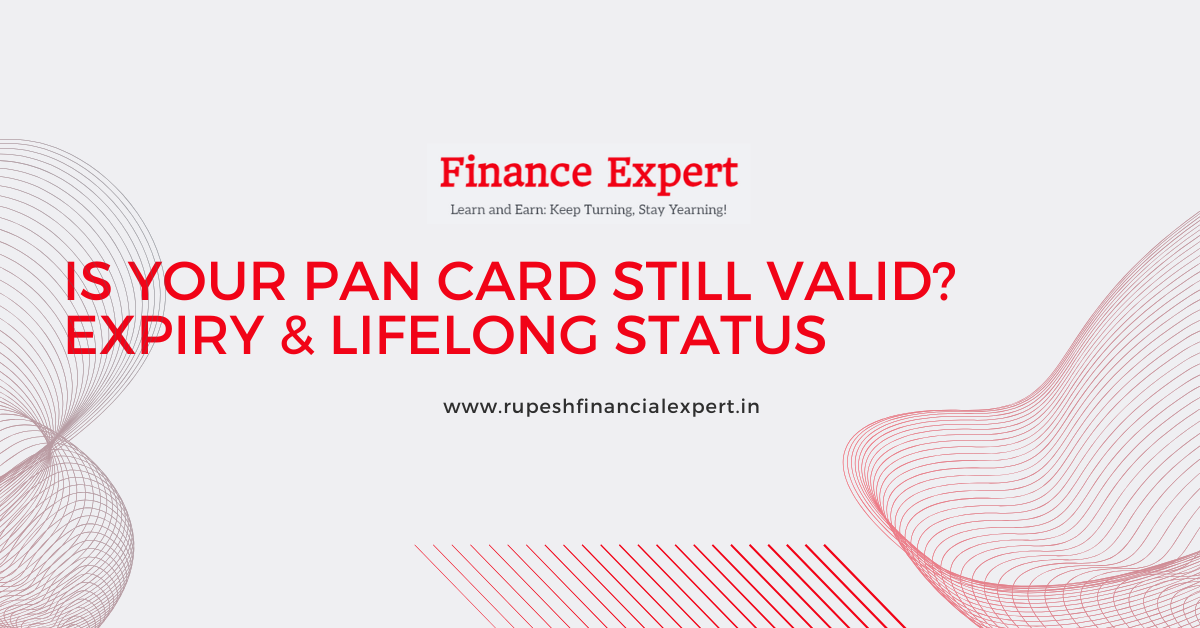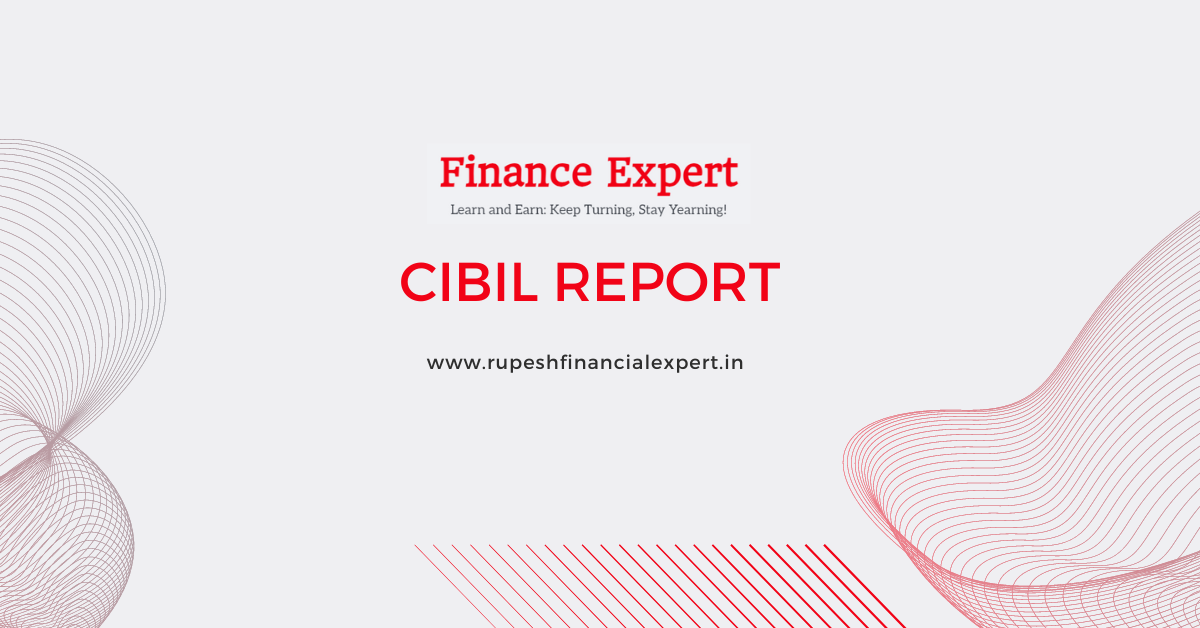Namaskar, my name is Rupesh Jadhav and welcome to Rupeshfinancialexpert, Where we unlock the knowledge of finance rather than locking it, This Blog is a part of a series in which we are discussing the CIBIL score, 2 Blogs have already been made on the CIBIL score, In the first Blog, we saw what is CIBIL score, why is it important, when you go for any loan or credit card? What is the meaning of low and high CIBIL score, In the second blog, we check how you can get the report of your CIBIL score online, and that too free of cost, It can be done through the website of CIBIL, So if you haven’t read those 2 Blogs, then do read those in this blogs, we’ll discuss how the calculation of the CIBIL score is done.
Basically, I told you this in the first blog that the CIBIL score depends on 4 main factors, The CIBIL agency don’t tell you the formula and algorithm, because that’s their proprietary algorithm, But they’ve told 4 main factors on which the CIBIL score depends, So we’ll see what are those 4 factors, We’ll understand the calculation, their weightages, and how you can maintain or improve your score according to those factors.

Will check how the calculation of the CIBIL score is done, I told you in my first blogs, that CIBIL score varies from 300 to 900, 300 is the lowest and 900 is the highest score, which is the maximum. Basically, the CIBIL score is the probability of defaulting of an individual, So if a person’s CIBIL is around 300, it means the probability of him defaulting on any loan is very high, A person with a CIBIL of 900 has a low probability of defaulting, because he pays all his loans and credit card bills on time, So historical reference is taken to calculate the CIBIL score, Now we’ll check the weightages and how the score is calculated, If your score is more than 750, it is considered a good score, and 80% loans than the banks disburse are of those whose CIBIL score is more than, So if your CIBIL score is less than 750, then your target should be to increase it, And if your score is already more than 750, then try to increase it above 800 or at least maintain it.
In the next blogs, I’ll tell how you can improve your score, and if you already have a good score, then also you should know the factors that help in maintaining a good score, Now let’s quickly check the weightages, There are 4 main weightages that CIBIL use to calculate the score, The blue colour marked is 30% past performance, 25% orange coloured is credit mix and duration, 25% in grey colour is leverage, and 20% yellow colour is showing the other factors, Let’s check what does these mean. Past performance that comprises 30% indicates, whether you do the repayment of your loan or credit card on time or not, so if you do the repayment on time then its good and your credit score will improve, This is the most important factor. If you’ve defaulted loan or credit card in the past, then even a single default can create a negative impact.
So try not to default in any loan, For example, you should pay the minimum due at least, Even if you are facing an emergency, and you don’t have the total amount in that month, to pay for the credit card or loan amount, then at least pay the minimum due, so that the default will not be counted, The second important factor is credit mix and duration, It is 25% actually, So this 25% means what type of loan you’ve borrowed, The mixture of secured and unsecured loans is considered good, Secured loans are those that have security behind, For example, in the case of a home loan, your home is mortgaged, in the case of a car loan, your car is mortgaged, there is gold loan as well, So these are the secured loans.
Unsecured loans are the personal loans or credit card that doesn’t contain any security, So if you will have a good mix of both types of loans, then it is considered a good factor and your CIBIL score will increase, On the other hand, if you’ve bought 3-4 credit cards and no other type of loan then it can be a negative impact, So try to maintain a good mix if you want a good CIBIL score, So if you take only one type of loan like credit card or personal loan, especially unsecured debt, then it can create a negative impact on your CIBIL score, If you take a high loan in a short period of time. If you applied for 3-4 loans within 3 months, then this will create a negative impact on your CIBIL score, but if you take 3-4 loans within 12-24 months, then it’s not a bad impact. Instead, it is a healthy mix, so you should also take care of the duration. If you will apply for loans or credit cards very frequently, then also your CIBIL score may get affected.
Then the 3rd factor consisting of 25% is leverage, Leverage means the percentage of credit or loan limit in use, what does it mean? If your credit limit is Rs 1,00,000, and you spend Rs 80-90 k every month, or you start using overdraft and spend more than Rs 1,00,000, Then there will be a negative impact, The more credit you’ll use, the more negative impact will be there, On the other side, if the maximum loan limit you can get is Rs 25 lakhs, and if you will take a loan of more than Rs 15 lakhs, then it can also create a negative impact, So leverage means if you are using the maximum of the loan limit available, then it creates a negative impact.
There are a few more factors that CIBIL do not disclose, Those are the different factors that comprise the remaining 20%, One factor among those is how many loan or credit enquiries you’ve generated, It means whenever you’ll generate an enquiry for a credit or loan, then the bank will demand your credit score from CIBIL, that creates a footprint, So if the number of inquiries are high in a short period of time, then there may be a little negative impact but it’s not a big factor, so if you’ve generated 70-80 inquiries within 2 months, then there may be a negative impact. otherwise, it is not a very big factor, if you’re using a normal credit facility, and generating normal inquiries, then there won’t be any significant impact.
These are the 4 major factors that create an impact on the CIBIL score, The most important is the past performance, repayment history and default history, after that credit mix, i.e., maintain a healthy mix of secured and unsecured loans, and don’t use too much credit. If you are credit hungry and you borrow too many loans, then there is a negative impact, apart from these, inquiries and all doesn’t matter much so don’t pay much attention to that.
In the next blogs, we’ll check how to improve the CIBIL score, in that I’ll written about some more factors. For example, if you took a joint loan, then what can be its impact, If you’ve issued an additional card on a credit card, then what can be its impact, If you are a Guarantor in a loan, then is there any impact or not, So we’ll check about all those factors, and we’ll see that if your score is less, It’s less than 700 or 750 then how can you improve it, I’ll written all these in the next Blogs so do read that blogs.
I hope you liked this Blog and if you did, then do comment and share this blog, If you have any suggestions or you want to suggest topics for the future blogs or if you want to share your thoughts with the community, then you can comment down below, I share finance and investment related interesting topics on this website daily. So, we’ll meet in the next blogs, Till then keep learning, keep earning, and stay happy always.




